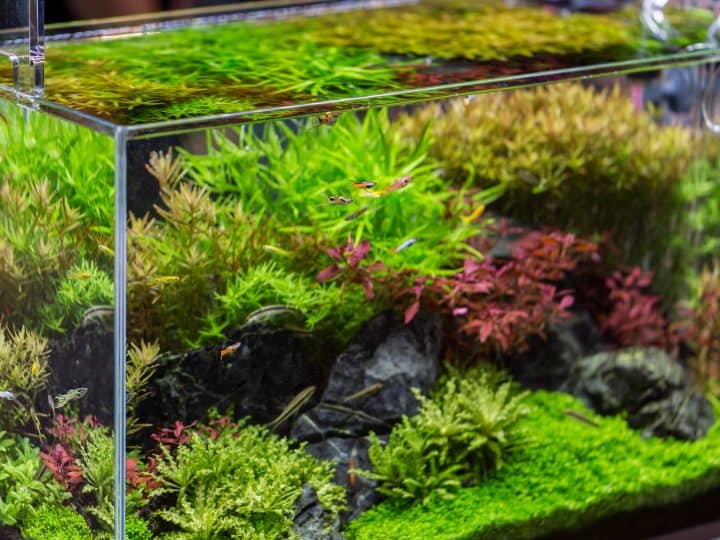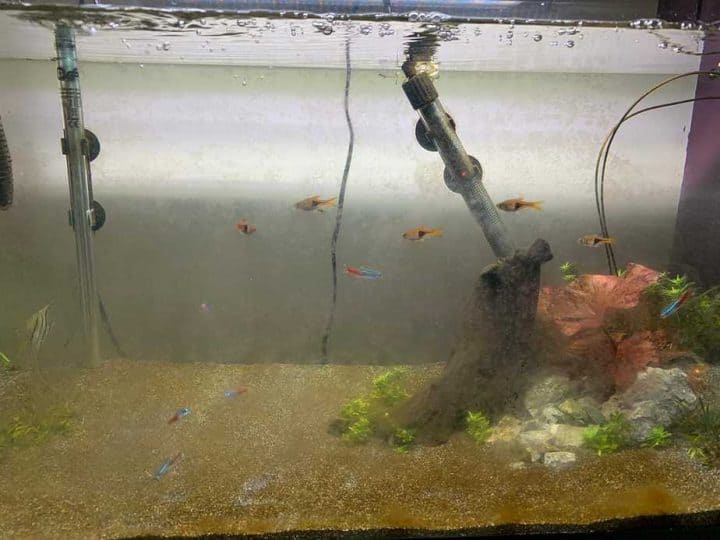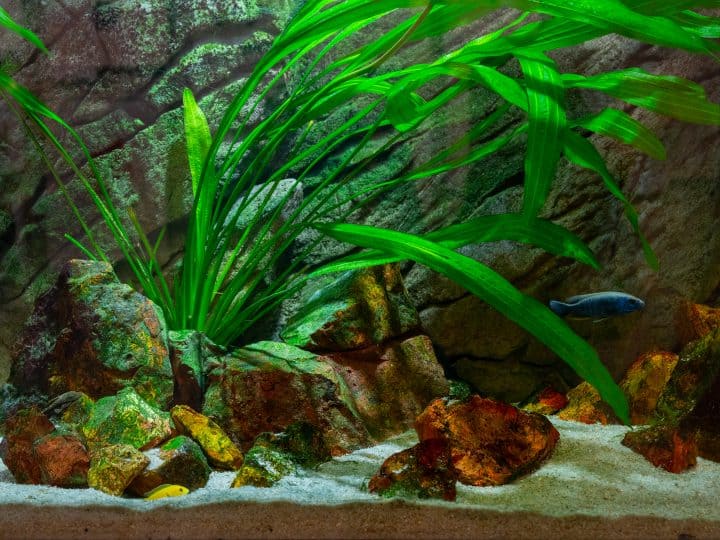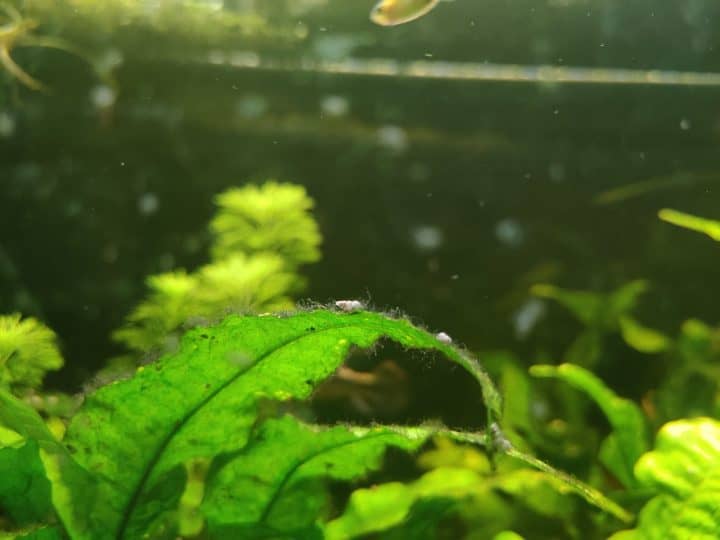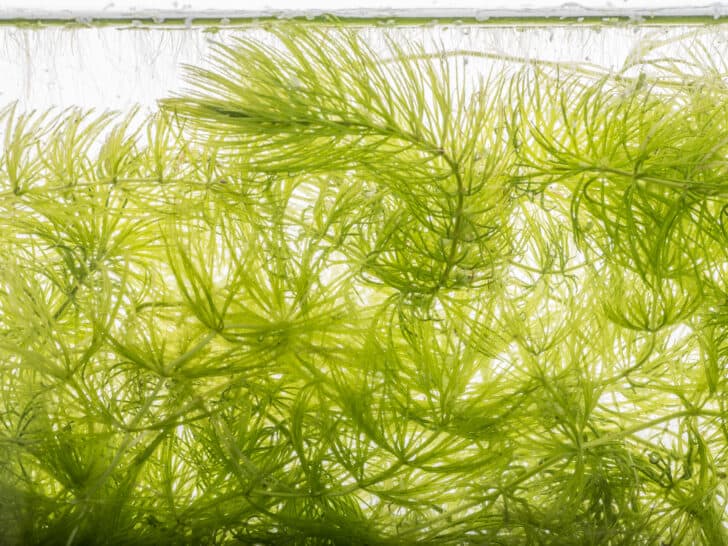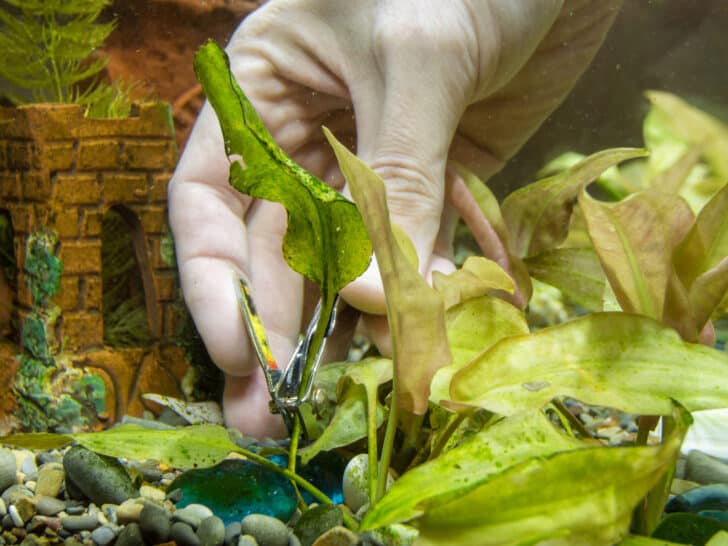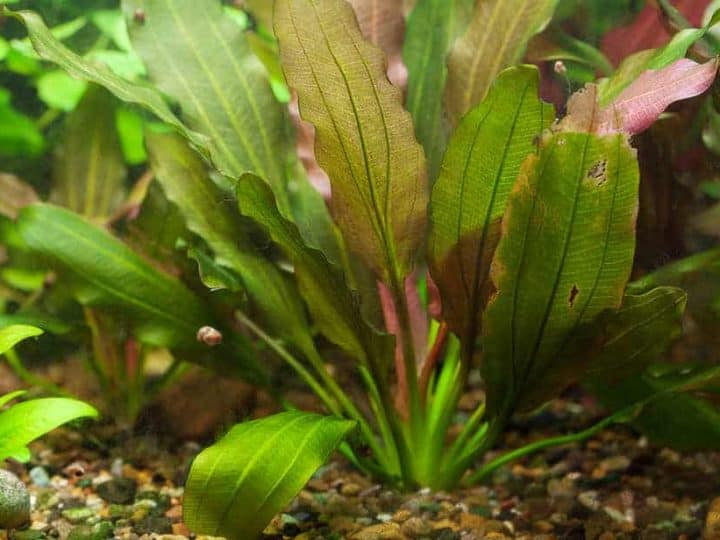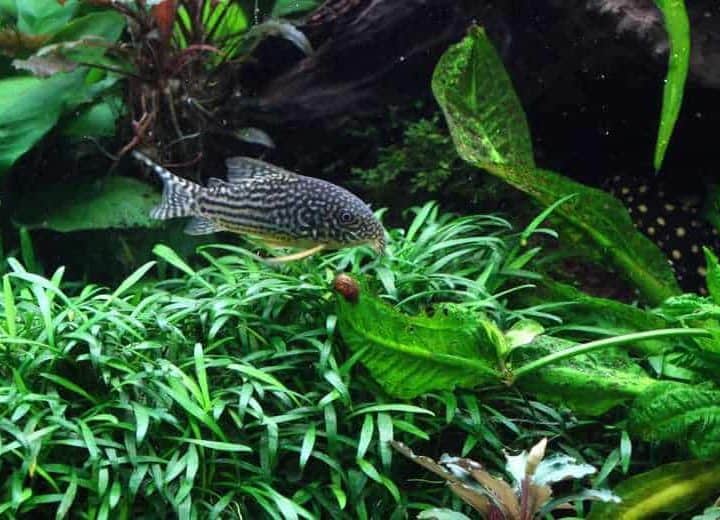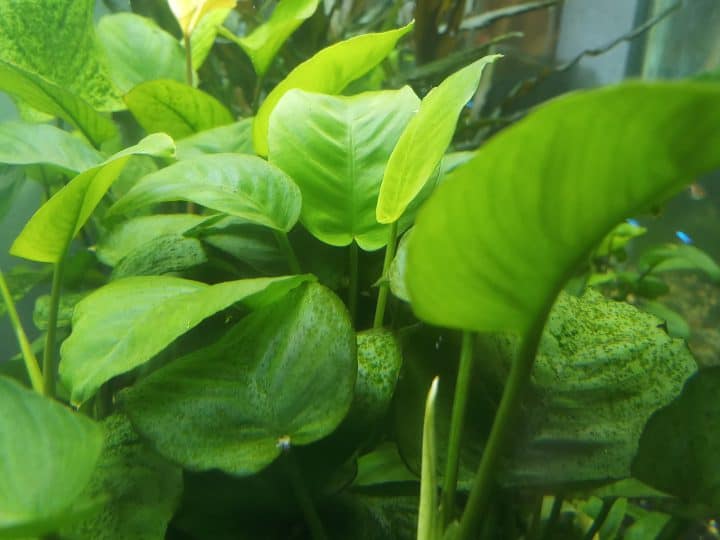Chlorine is a naturally occurring element added to our water supply to give us clean, fresh drinking water. The amount used isn’t harmful to humans or other animals because there are laws regulating its use. For plants, however, even small amounts of Chlorine can be detrimental.
Quick Answer
Chlorine can kill plants in your aquarium. It prevents nutrient intake and hinders their growth. The element can also be toxic to algae, fish, and other animals in your aquarium. Chlorine should always be removed before introducing fish or plants into your aquarium.
In this article, I’ll discuss the effects of Chlorine on aquarium plants, what can cause toxicity and disease, and how to prevent it. Additionally, I’ll go through some of the best ways to remove Chlorine from tap water to ensure your plants and aquarium life stay healthy.
Does Chlorinated Water Kill Aquarium Plants?
Chlorine can kill aquatic vegetation by preventing nutrient intake. As a result, even if plants survive, they may not be appropriately developed and most likely have slow-growing weak roots. So, they’ll easily succumb to disease outbreaks later on.
In addition to killing aquatic plants directly, Chlorine will strip away their ability to uptake nitrates, which are essential nutrients that promote proper root development. This can cause aquarium plants to weaken and become susceptible to disease, including rot. Chlorine toxicity can lead to the death of aquarium plants.
Rather than giving off poisonous fumes like other types of chemicals might do, chlorine simply suppresses oxygen content within an enclosed area such as a small bowl or pool, which can be fatal for any living creature.
In larger bodies of water such as rivers and seas, however. The atmospheric effects are not so dramatic because there is already naturally occurring ozone present at ground level. When considering the health of aquarium plants, it’s important not to expose them to Chlorine.
Tap Water Can Cause Chlorine Toxicity in Aquarium Plants
Tap water can cause chlorine toxicity in aquarium plants. Chlorine will kill aquatic plants and strip away their ability to uptake nitrates, essential nutrients needed for proper root development. Tap water is treated with Chlorine, so to use it in aquariums, the Chloring first needs to be removed.
Although some of your live plants may survive tap water, you should still proceed with caution as chlorine toxicity can cause various health problems in aquatic plants.
If your new aquatic plant lives in chlorine-treated tap water, it may suffer from stunted growth, have weak roots, and be more susceptible to diseases, including chlorosis. Moreover, insufficient uptake of iron and magnesium can make the leaves yellow.
Tap water is chlorinated to kill harmful bacteria and microorganisms. Though the amount of chlorine present in tap water is safe for human consumption, aquarium plants are much more sensitive to the chemical.
Chlorine can also affect other organisms in your aquarium, such as:
- Invertebrates
- Snails
- Fish; and
- Some types of algae.
The element is extremely harmful to fish and must be totally removed from the water before it comes in contact with them. Chloramine is a disinfectant also used in treating tap water and is a combination of chlorine and ammonia, both of which are hazardous to fish.
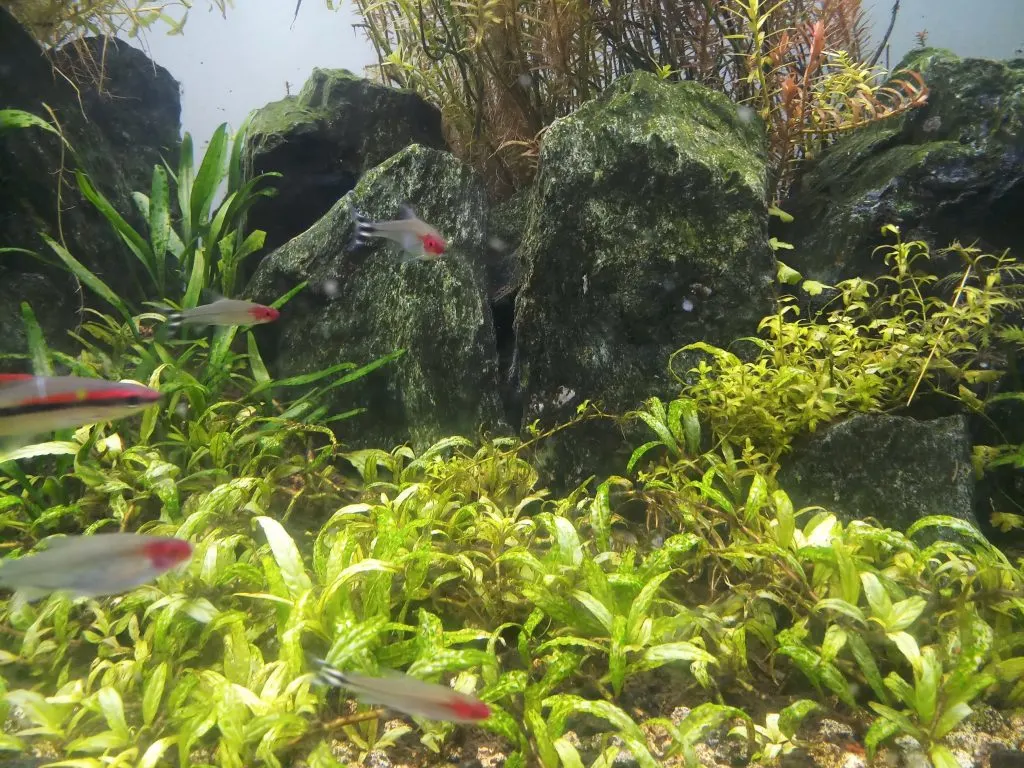
How Much Chlorine Is Toxic to Plants?
It takes only a small amount of chlorine to cause harm. According to some specialists, the concentration level at which damage occurs may be as low as 0.5 parts per million.
The actual concentration level at which harm occurs from chlorinated water varies from plant to plant. Some aquatic plants are extremely sensitive to chemicals that affect their environment, while others can survive in almost any condition.
According to the CDC, four mg/L (4 parts per million) is the maximum amount of chlorine permitted in drinking water. Plants need chlorine in small amounts, but too much of it can damage or kill them.
If you have a fish tank with aquarium plants, it is essential that you remove all traces of Chlorine before putting them into an aquarium filled with tap water.
The amount of time required for this transformation process depends on many factors such as:
- Temperature
- Existing chlorine levels
- pH levels
In general, once the water is completely chlorine-free, you should wait for 24 hours before adding fish to your aquarium.
The chlorine concentration in tap water can vary depending on where you live and how old your pipes are.
You can use test kits to measure the exact amount. The Tetra EasyStrips on Amazon.com is an excellent option, which can also test for the presence of ammonia or nitrite levels higher than zero ppm. You should not add any fish to an aquarium containing detectable quantities of ammonia because they could die due to poisoning before the cycle completes.
The best way to avoid toxic chlorine is by using commercial water conditioners that remove it from the water before adding plants or fish into your home aquarium. While safe cycling involves many steps, such as having lots of aeration, most people have an easier time cycling a freshwater aquarium.
Do You Have to Dechlorinate Water for Aquarium Plants?
You must dechlorinate your aquarium water before introducing any live elements because chlorine is harmful to plants. You need to make sure any water you use in aquariums is free of chlorine.
When it comes to removing chlorine from water, there are several ways you can go about doing this. One of the best and most popular methods is using a dechlorinating agent that removes chlorine or chloramines (combinations of ammonia and chlorine) and other chemicals such as heavy metals.
The key is to make sure you choose a safe dechlorinating agent. Some key points to remember when dechlorinating aquarium water include:
- If the product does not explicitly state it’s okay to use with aquarium plants, avoid using it. If the product isn’t aquarium specific, Chlorine will still be present in your water, which can harm or kill aquatic plant life.
- Test the chlorine concentration. In terms of how much time to leave the water sitting before adding it to your aquarium, this depends on the concentration of chlorine and chloramine in the water. Follow the instructions and use chlorine test strips to ensure all chlorine is removed.
If you can’t find a dechlorinating product, I recommend using a dechlorinating agent or another method such as evaporation, reverse osmosis, or filtering through activated charcoal to remove all traces of chlorine ammonia and other chemicals that might harm aquatic plants.
How to Remove Chlorine From Tap Water
Tap water is treated with chlorine to kill harmful organisms, including bacteria and algae. Chlorine exists in tap water as:
- Chlorine (Cl)
- Hypochlorite ion (OCl-), or
- Chloramines.
Chlorine is introduced to drinking water as elemental chlorine, sodium hypochlorite solution, or dry calcium hypochlorite during the treatment process.
There are several ways to go about removing it from your tap water and making it safe for aquarium plants. You can use evaporation, natural filtration, or activated charcoal to remove all traces of chlorine, ammonia, and other chemicals.
Chlorine Removal by Activated Charcoal
One of the best ways to remove harmful substances from your tap water is through activated charcoal.
Activated carbon filters can remove chlorine as well as chloramines formed in the presence of both ammonia and chlorine.
They typically have two parts: a container with the filter media inside it and an intake tube attached to transport water through the container holding the activated carbon particles.
The filter works by binding itself to chemicals and pollutants in water to be removed during filtration. In this way, activated carbon can bind chlorine or chloramines and other contaminants such as medications and other impurities found within tap water.
You shouldn’t confuse activated charcoal with regular charcoal, which will actually add harmful elements back into aquariums when used as a fish tank treatment solution because of its porous nature that traps everything, including:
- Ammonia-producing bacteria
- Phosphate
- Nitrates; and
- Proteins along with various dissolved organic compounds.
Chlorine Removal by Reverse Osmosis Systems
Reverse Osmosis is a process that filters particles and chemicals out of water. There are many different types of RO systems, some designed for filtering small amounts of chlorinated tap water. A reverse osmosis system on your aquarium can remove most of the chlorine and chloramines in your tap water.
These will typically be reduce chlorine levels down below 50 ppb (parts per billion), according to some studies done on municipal tap waters that contained 100ppb of chlorine before filtration. Another great thing about these filters is they also soften hard tap waters, making it easier on aquarium inhabitants if you have hard water.
Reverse osmosis filters remove chlorine and makes the water drinkable by transporting it through numerous stages of filtration. The process uses high pressure to force water through tiny pores in a semi-permeable membrane. Common elements in a reverse osmosis system include:
- The pre-filter
- Activated carbon filter
- Reverse osmosis membrane; and
- Post-filter
Reverse Osmosis systems can be expensive to purchase and install, but they remove chlorine and other contaminants very effectively.
Reverse osmosis will not affect the pH level or alkalinity – two crucial factors that can drastically alter aquarium water chemistry.
Reverse osmosis systems can be an excellent choice for removing high total dissolved solids (TDS) levels, including chlorine and other contaminants. They must, however, have post-carbon filters and deionizers to maintain healthy water chemistry.
Chlorine Removal Through Evaporation
Chlorine will dissipate over time as it is exposed to air and light. So, the best thing you can do for your aquarium water after removing chlorine from tap water is to wait.
If you’re planning on adding plants or animals immediately, make sure the bucket of prepared water has had ample time out of direct sunlight before moving on.
To remove excess chlorine from tap water before using it in an aquarium:
- Let the container sit open overnight at room temperature. This allows most of the evaporating chlorine gas to dissipate into the atmosphere. This process also works with a bucket that has aeration holes punched into its sides.
- Leave the water outside in the sun for 24 hours to allow the chlorine to evaporate naturally. UV exposure can assist in the dechlorination process.
Using an Aquarium Water Conditioner or Dechlorinator
I strongly recommend dechlorination when using untreated city water for both fresh and saltwater tanks.
However, even adding a dechlorinator will not undo the damage caused by long-term exposure to high levels of chloramines or heavy metals. So, be sure to have a dechlorination system in place before introducing new plants.
These systems are easy to install and maintain because they do not require any electricity or plumbing changes. There are many benefits to using these products:
- They can remove up to 99% of chlorine from tap water. This level is considered safe, according to the U.S Environmental Protection Agency (EPA).
- Tap Water treated with this product still contains essential nutrients needed by plant roots such as oxygen, carbon dioxide, nitrogen, and phosphorous compounds required for healthy growth.
- You should be able to easily find them at local aquatic stores.
Some of the most common types are activated carbon filters, KDF/GAC systems, and saltwater chlorine generators. These products vary by price depending on their features, but you can find them at reasonable prices, ranging from $50 to $200 or more.
Conclusion
City governments across the country add chlorine to our water supply to purify the public’s drinking supply. Chlorine allows us to safely consume tap water, but for aquariums, it may need to be removed before it is safe.
Unfortunately, it poses problems for aquatic animals such as fish and plants that live in home aquariums. That’s why you should always make sure there aren’t any detectable amounts of this chemical in your tank before introducing either one.
There are several ways to dechlorinate any tap water used for aquariums, including:
- Removal through evaporation
- Reverse osmosis
- Charcoal filters; or
- Water dechlorinators

